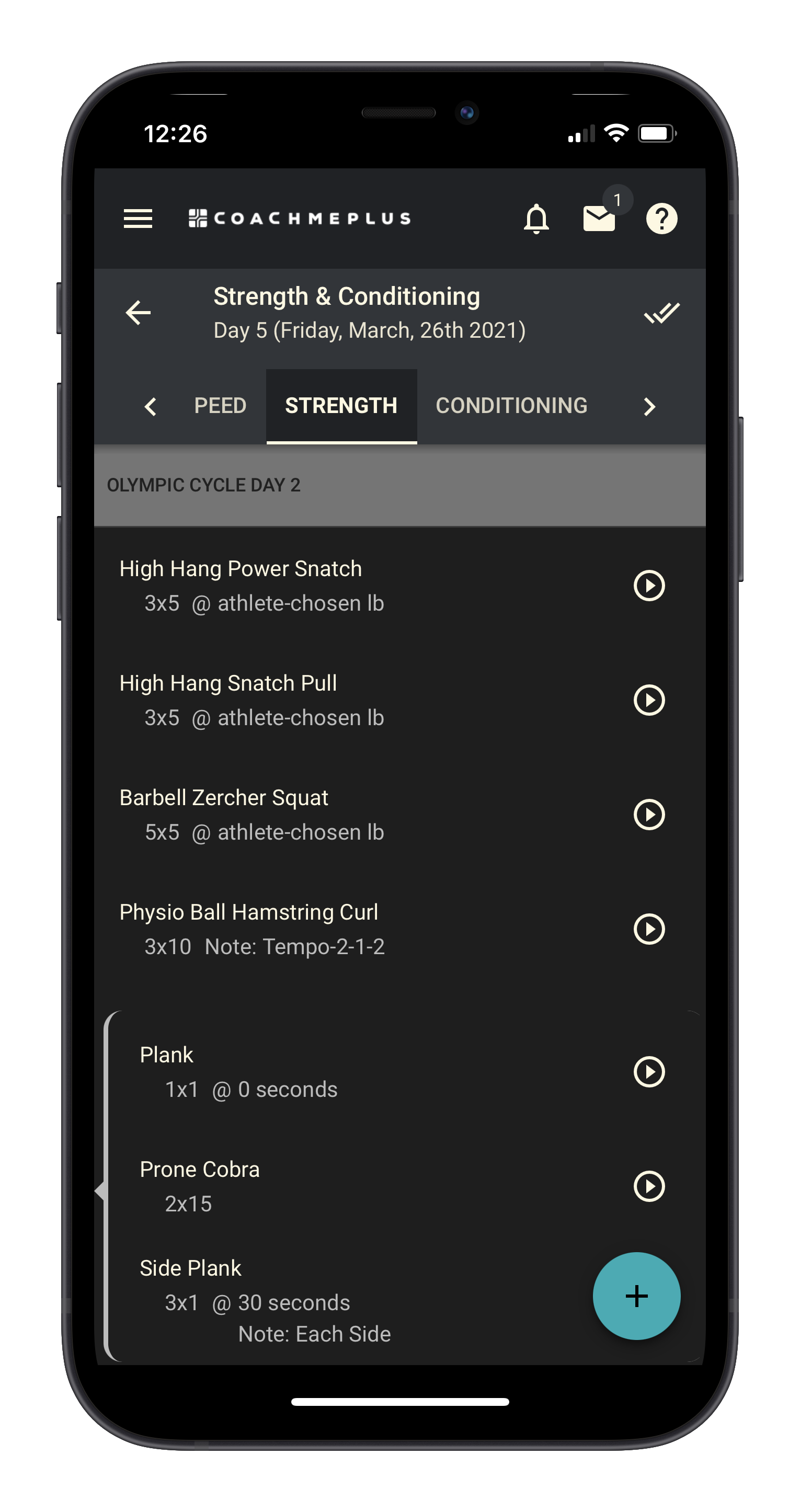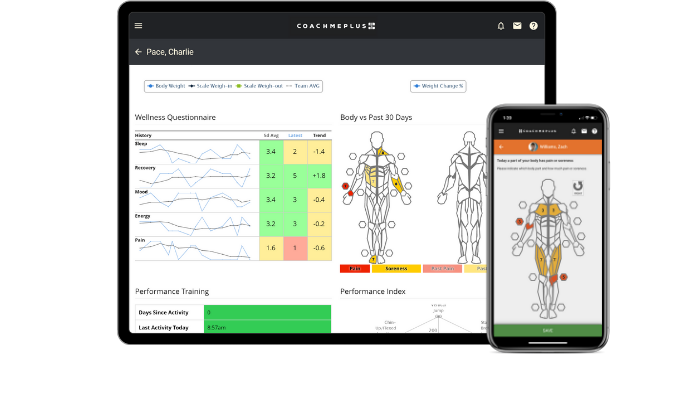
The use of apps and fitness devices is growing rapidly in the U.S., and this pattern of adoption is expected to continue to grow in 2021 and beyond. The opportunities for small and large gyms are enormous, and software solutions that are mobile-friendly are an important investment. This Academy Guide explores the current trends in revenue models outside of the brick-and-mortar gyms and covers new options in fitness and the businesses of sports performance. What seems like a possible disruption to the commerce of private facilities is actually a revenue opportunity for those that embrace the changes and capitalize on the market for services outside the gym. The athlete management systems market is growing in elite sport, but they are also revenue tools for private facilities that are equipped to expand their services to areas that customers currently demand.
Brick and Morter vs. Online Services
The value of a facility is a product of its expertise and the right training environment. The traditional business model is to charge clients for time or access to a physical space with or without coaching; now the addition of services that extend outside the facility are new opportunities for additional revenue. In addition to providing support services to the client during the period of time outside of the facility, the current customer wants access to their own training and recovery data, including the information from apps and devices.
The perception that a customer wants either a physical or a virtual experience is wrong; the current market expects either both or a hybrid option for convenience and better value. Traditional revenue services of the past were limited to physical sales-type offerings such as merchandise, or additional physical services such as massage therapy or private classes. Today, facilities act like small brands to promote their business, and extend their reach further with meal services and monitoring outside the gym.
The connected studio, gym, and high-performance center can all benefit from adding technology to reduce costs. While most of this guide is on adding revenue opportunities to the brick-and-mortar business model, enhancing the existing physical location with technology should not be overlooked. To reduce costs, improve customer experience, and maximize operational performance, adding technology internally is an investment that reaps immediate benefits. Connecting the internal and external communication of customers helps drive value both ways, while improving the speed and quality of the results promised. Convenience billing, social media marketing, and event gamification can help with client satisfaction when the right software is utilized. When investing in software, the internal operational needs must be integrated with the external services.

Benefits of Management Software to Clients
There are numerous advantages to adding the right management software, including client retention, increased referral rates, and revenue value per customer. Simply adding a customer to a cloud option can improve the results of training by increasing the touchpoints during the time away from the facility, and allow for communication to be efficient if they are correspondence clients. Online training is growing, and the expectations of what is included with an investment in training is also following suit. Driving the expectations of fitness and wellness clients is the awareness of the standards of high performance sport and military training, as information on those two populations is visible and promoted. What happens at elite levels tends to drive lower levels in time, and the modern personal training client or private athlete demands the same quality of support they observe others receiving.
The clear benefit of software is scalability of service, where one solution can be either automated or shared with less time and energy. A workout builder allows a single program built for one client to be quickly shared across dozens of clients. Using software enables an individual coach to work with more clients or do more with each client, by increasing the results of their expertise. Efficiency in training means less time doing unskilled tasks and more time to increase the results of available time to train either in-person or virtually. Larger gyms can also learn more about their clients from analytics and other client behavior tracking, and know when they should put more resources into special areas that customers need or want. Companies, big or small, that are more connected to their customer needs will be positioned better with potential clients during the sales process.
Correspondence Training Programs
Online programming is a needed solution for those that have tight schedules or are at the point they are competent in training but need a training plan. The correspondence training offering is capturing a bigger piece of the already billion-dollar personal training market. Currently, plenty of coaches and trainers in the online training market are 100% virtual, meaning they do not work with any client in-person, and rely on software solutions or simple communication tools to deliver workouts and training advice. The quality of training is improving thanks to smartphones and video apps, and software that is specific to writing workout plans.
As mentioned earlier, one of the reasons that online training is growing is the scalability of software. If a customer has a competence to follow training programs, the high-margin benefits of online training become extremely compelling to experienced coaches who know their customers. A successful online coach or one who provides partial or complete services will be able to generate more profits and grow without the constraints of brick-and-mortar business models. The flexibility of correspondence programs and the ability to upsell countless offerings enables a small facility to generate large additional revenue streams, and empower larger companies with revenue as well.

Monitoring Outside the Gym: The Opportunity and Requirments
Lifestyle monitoring—specifically wellness activities, sleep, and individual diet compliance—is big business now. The growth of nutrition-logging apps, sleep devices, and mindfulness training has skyrocketed over the last five years. Due to the interest in personal health data, sharing and analysis by professionals is expected to continue to become more important in the coming years. Subscription model revenue is increasing, and the monetization of monitoring is common with boutique and concierge wellness and fitness centers. High-end clients are demanding higher standards of support and the average customer is adopting the same expectations with entry-level products.
Monitoring does have a time requirement for coaches, but dashboards and data visualization features enable rapid, at-a-glance summaries to cut down on analysis. For a nominal fee, a trainer can review customer data within minutes, and the customer gains great value from the exchange. Customers with all of their data content organized and centralized in one portal can make their own decisions, electing to communicate when they are unable to problem-solve issues they have during off hours or when they are there in-person.
Support time and troubleshooting issues are responsibilities for coaches who do provide monitoring of clients. The inclusion of monitoring requires time and experience, but the value and scalability is a welcome trade-off. Many clients are self-sufficient and do expect that time with a coach does amount to additional expenses if they want more support outside of what they are already paying for. Extremely clear education on what the added service entails with access to a trainer’s or coach’s time and response rate should be factored into the pricing. More details and best practices with billing and pricing will become available as the market matures and saturates.

Marketing Value-Added Software Services
The paradigm shift of charging for cloud services in the health and fitness space requires education and marketing. Customers need to see the value of paying for more support and be aware of the current areas in their lives where they are likely already accepting this change, just in other industries. Disruption is a natural and eventual occurrence in all industries, and the fitness market is not unique and protected from change. In order to monetize the value-added services of apps, devices, and support, businesses must market intelligently.
The specific pricing of additional services or comprehensive virtual support should be based on the value of the offering, not the software cost. Conventional reselling of merchandise is not analogous to software pricing, and due to the high margins on software, external services are a refreshing revenue opportunity. Supplements, apparel, and other offerings are important in both the branding and results of training services, but are not similar in pricing and sales. Efforts in delineating what is included and what is an added expense are necessary to educate the client on what they are paying for.
Promotions, bundling, referral programs, and customer appreciation marketing campaigns are all effective in selling customers fitness- and health-oriented software services. Similar positioning and marketing to conventional services in training can and should be used with online solutions. Adding the unique benefits of out-of-the-facility support is required to convert the value of the service.
The Future of Cloud Coaching and Services
Similar to the app and fitness device market, AI (artificial intelligence) is predicted to grow in usage in the health and fitness space. Surprisingly, machine learning and virtual coaching are expanding the market rather than directly competing with face-to-face training. Having a plan to use new technologies that can extend both the effectiveness and the business opportunities of external services is necessary to market and promote new services. It’s better to prepare for such disruptions in advance by understanding the limitations and benefits of software solutions, and using them as a business extension to strengthen the limited time you have with clients. When properly integrated with a training and lifestyle support program, an athlete management system offers an advantage to the coach or trainer, as well as a new vehicle for revenue for their gym or service.
Start Your 14-Day Free Trial Today
CoachMePlus is a comprehensive solution for any training environment, ranging from scholastic level to pros, and including both military and private facilities.

Recent Comments